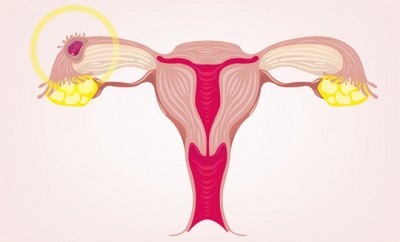How Soon After Implantation Can I Take a Pregnancy Test?
Implantation is the process of ovum’s invasion into endometrial lining. At that, affection of certain vessels results in the so-called implantation bleeding. To ascertain the fact of pregnancy, the woman may have a blood sample tested in a clinic or take a home pregnancy test, based on the detection of HCG (pregnancy hormone) in the urine. Reliability of examinations depends on the level of this hormone at a certain stage. But the final confirmation of pregnancy is only up to the doctor, who will need to make an ultrasound examination.
Implantation is one of the first critical moments in fetal development. It involves the constantly mitosing embryo’s invasion into the thickness of the uterine mucous lining (endometrium).
This process takes place in 3 stages:
- Attachment of the ovum;
- Its implantation in the endometrium (sometimes, accompanied by implantation bleeding);
- Final fixation of the fetus and healing of the mucous lining, affected during its «invasion».
This process starts on the 6th day after fertilization and is fully complete on the 12th day. It is accompanied by secretion of a large spectrum of hormones and bioactive substances by the fetus itself and certain structures of the mother’s organism. Particularly the human chorionic gonadotropin hormone (HCG) is being produced.
Its effect on the earliest stages of pregnancy is about the yellow body maintenance (since the follicle is being emptied after ovulation). Before the formation of the placenta, the yellow body is the core producer of progesterone. Initially, HCG is being produced by a special element of the ovum – the syncytiotrophoblast. Detecting HCG and defining its level in the blood and the urine is what contemporary pregnancy tests are based on.
When to test after implantation bleeding is appropriate?
Many home pregnancy tests claim to be able to “answer the question after the very first day of the delay”. Is that really true? The fact is that the test can only provide for an accurate result in case the following two factors are considered:
- The HCG level in the examined substance;
- Sensitivity of that specific test.
The level of this hormone in blood or urine depends on the specific day, following fertilization. In the case of normal uterogestation, the level of HCG is being twice increased every 48-60 hours during the first eight weeks.
Thus, 4-5 days after implantation (i.e. approximately before the due time of the expected period), the HCG content in the blood sample is about 25mIU/ml. It can be detected by an immunoassay (analysis of a blood serum, taken from a vein in special laboratories). In another 1-2 days, the HCG level reaches the same mark (25mIU/ml) in urine, but home pregnancy tests are better to be taken in the morning, when the urine is least attenuated.
Be careful when choosing a test in a drugstore! If the package has a note, saying “sensitivity 20 mIU/ml”, then the test is suitable for early detection of pregnancy (immediately after the delay). Tests, with a note “sensitivity 40 mIU/ml” can be used no sooner than on the 7-9 day after implantation bleeding.
Pregnancy test after implantation bleeding – is it always reliable?
Even having calculated, how many days you should wait for an accurate test result, you should keep in mind that, for example, in case of ectopic pregnancy the HCG level rises slower and less intensively. Besides, threatened miscarriage also provokes reduction of the HCG level. These objective principles are not free of exceptions (about 15-17%). However, the variant of false negative test is within the realms of possibility. Similarly, a false negative pregnancy test result can be due to too early testing (when the HCG level has not yet reached the minimal mark, subject to detection).
Causes of a false positive test result:
- A tumor that produces chorionic gonadotropin;
- Hemolysis (destruction of blood cells);
- Lipidemia (high content of lipids in the blood);
- Laboratory error
Methods of confirming a positive pregnancy test after implantation bleeding
Having a positive pregnancy test 6-8 days after implantation (on day 26-28 of an average 28-day cycle), it is best advisable to confirm the result. This can be done with the help of closer attention to subjective pregnancy symptoms, such as:
- Nausea and vomiting;
- Frequent urination;
- Increased fatigability;
- Delay of a period;
- Swollen and sore breasts;
- Intensive pigmentation of the skin, including “linea nigra”– a black vertical line along the belly button.
However, confirming or casting back the fact of pregnancy is only up to the gynecologist, who will need to make an ultrasound examination. How many days should one wait after implantation bleeding, in order to the test to be indicative?
Fetal heartbeat can be recorded during endovaginal ultrasonography, when the sensing device is entered into the vagina) while the HCG level of 1000-1500 mIU/ml corresponds to the term of 24 days after fertilization (18 days after implantation). However, this method reaches the maximal level of accuracy a bit later – the ovum should be distinctly visible in the uterine cavity on the 5th week of its development (the level of the so-called “pregnancy hormone” is 1500 to 2000 mIU/ml). Fetal heartbeat is unmistakably recorded on the 6th week (5000 to 6000 mIU/ml).
That is to say, a home pregnancy test is an important attribute for early screening of pregnancy, but it’s not reasonable to have absolute credit in its result. Taking the test even later than a week after implantation bleeding (in case it was actually observed), you cannot have a 100% guarantee for its accuracy, which should by all means be confirmed by a specialist.













